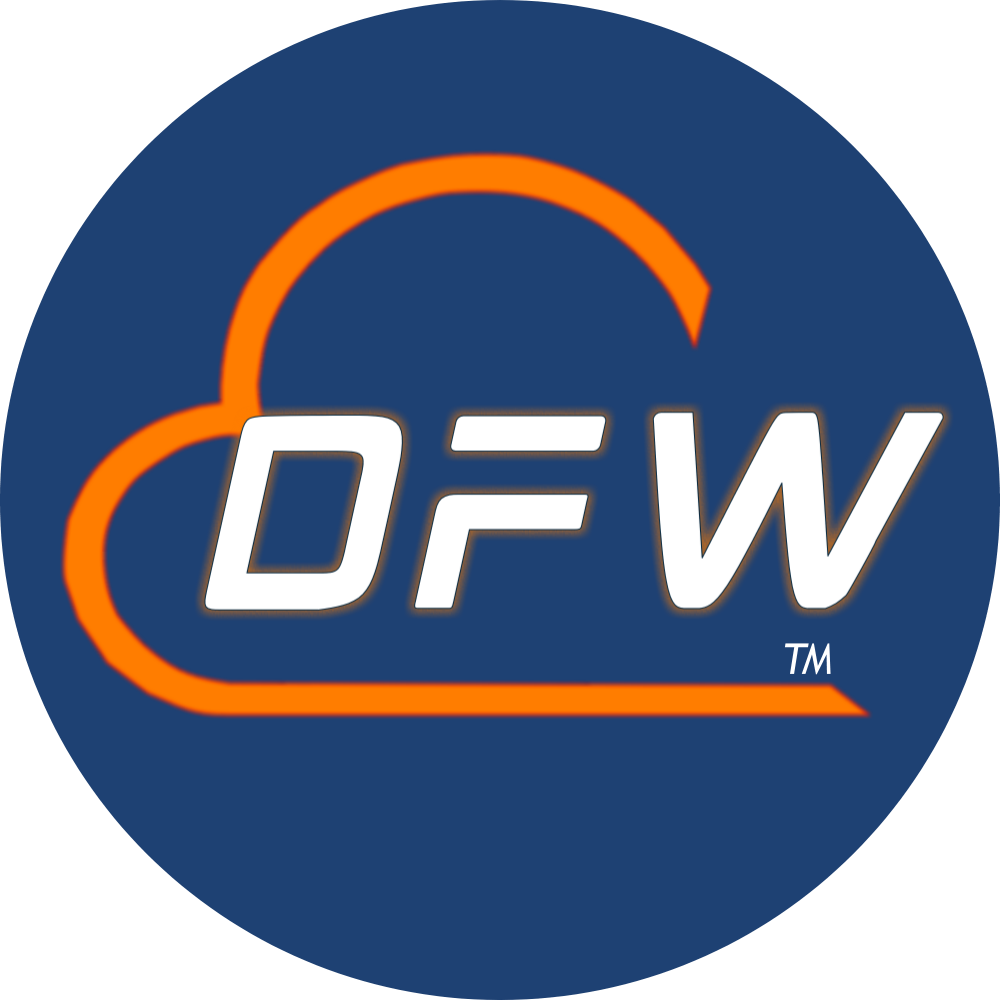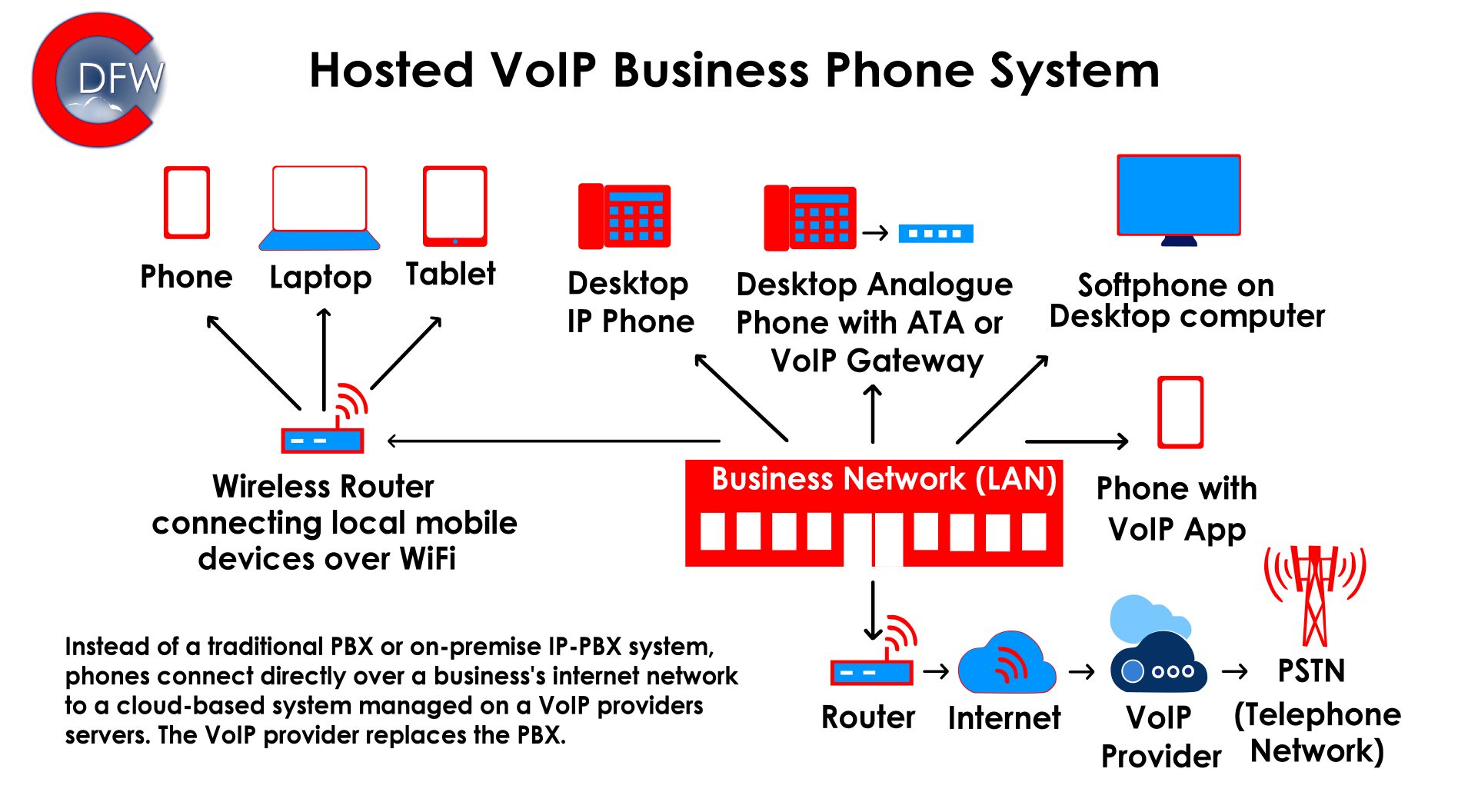How does Voice over Internet Protocol work? What are the benefits of using VoIP? What types of systems are there? What should you look for when choosing a provider? There are so many questions about that it’s hard to know where to begin! That’s why Cloud DFW created this guide, where you can find everything you need to know about the solution in one place and learn how it works and what the benefits are. This guide covers everything you need to know from PBX systems to SIP softphones! Including stratight apples comparrison guide.
Introduction: What is Voice over internet protocol?
It is a technology that makes voice calls over the Internet using a broadband connection instead of a regular telephone connection. You may dial someone with a IP Calling telephone number if you use the same service, but if you use another, you can dial anyone with a telephone number – including locals and long-distance numbers. Some services also work on computers or particular IP calling phones, while others allow you to use a traditional phone with a ATA adapter.
How Does Voice over internet Protocol Work?
Voice over Internet Protocol can enable you to call directly from your computer, through a particular internet enabled phone, or a traditional phone connected to a special adapter called an ATA. When using IP Calling services, your voice is digitized and travels over the Internet. If you call a regular telephone number, the digitized voice is converted back to traditional phone signals before it reaches its destination. In addition, wireless hot spots in places like airports, parks, and cafes allow you to use the Internet and sometimes also enable you to make calls over the internet.
The Benefits of Voice over Internet Calling
What are the advantages?
Many service providers have more perks and extra features not seen on a traditional phone plan, and many have them for an additional cost. Visit us to find out the differences, and if you need help, Cloud DFW can help!
Reduction in long distance, it’s a known fact that traditioit’sPOTs or Plain old Telephone lines are becoming more expensive.
What are the disadvantages of Hosted Communication?
Consider these differences when replacing your traditional telephone service with Voice over IP.
For example, your voice over ip service might not function during a power outage, and the provider may not offer backup power.
You may need to analyze your usage, and you may have to set up priority routing during heavy use. You may experience jitter or packet loss which will stifle the quality of the call. It’s essential to understand bandwidth requirements before implementing the solution. Cloud DFW recommends at least 100 kbps of upload and downloads bandwidth per line. Don’t let anyone tell you you need less or believe that a one-megabyte connection is enough for ten IP enabled phones. It would be best to have at least one gigabyte of dedicated bandwidth to simultaneously handle ten high-quality voice over internet calls.
How To Calculate Bandwith
The factors that go into bandwidth calculations are numerous, including packet sizes, compression or lack of compression, encryption, protocols, audio codecs, etc. your network’s bandwidth consumption is affected by these factors. To calculate bandwidth consumption, you need to know three things:
Total packet size = headers + voice payload size
PPS = (codec bit rate) / (voice payload size)
Bandwidth = total packet size * PPS
Suppose you use the G.720 codec with a bitrate of 8 kbps and a voice payload size of 20 bytes with 8-byte headers. Your calculations would be as follows –
Total packet size = 8 bytes (headers) + 20 bytes (voice payload size) = 28 bytes
Total packet size in bits = 28 * 8 bits per byte = 224 bits
PPS = 8 Kbps (codec bit rate) / (160 bits) = 50 pps
Bandwidth per call = 224 bits * 50 pps = 11.2 Kbps
So you would require 11.2 Kbps as per Voice call. The total bandwidth consumption would depend on the number of concurrent calls at any time. If you have more bandwidth, you can make more calls at the same time. Most organizations do not calculate the bandwidth requirements themselves.
Some security and fire alarm systems may not work over VoIP lines, and you may have to maintain a POTS line for security and fire alarm systems.
It is possible to contact emergency services, but not all VoIP services do so. Please see the 9-1-1 VoIP & 911 Advisory for additional information.
For better or worse, voice-over-internet providers may not offer directory assistance/white page listings.
On-Premise PBX vs Voice over IP
VoIP (Voice over IP) uses the Internet to send and receive phone calls, whereas PBXs rely on landlines.
Some things differ between a VoIP phone system and a premise-based PBX system.
Average Costs associated with both Premise PBX and VoIP
Comparison
Traditional PBX
Business Voice over IP
Average Costs
– Hardware/Equipment Cost:
$5,000-$9,000 for 15-20 users
– Software Licensing Costs:
$3,000-$4,500
– Installation/Setup Costs:
$1,000-$1,500
– Maintenance Costs:
Average of $3,000-$4,000/year
– Additional Costs:
$1,000-$1,500 month
– Hardware/Equipment Costs:
Can use existing devices for calling, including smartphones and desktop computers, can be as low as $150.00
– Software Licensing Costs:
Bundled monthly service plans from $20.00-$50.00+/user per month
– Installation/Setup Costs:
$35.00-$50.00
– Maintenance Costs:
The provider handles the maintenance
Additional Costs:
$12-$25.00/month
Available Devices
-Landlines
– Desk Phones
– Desktop Computers
– Smartphones
– Laptops+Tablets
Hardware and Equipment
– Premise-Based PBX Server
– Hard Phones
– Routers and Cabling
– Backup Power Supply
– Modems and Splitters
– Electrical Outlets and Wall Jacks
– Proper Circuit Capacity
– Internet Access
– Router and Ethernet Cord
– PoE Adapter
– Analog Telephone Adapter (ATA)
– VoIP Gateway
– Headsets/Desk Phones (Optional)
– Backup Power Supply (Optional)
Mobility
Can only be used in the building where the corresponding hardware is located (in-office)
Portable, can be used anywhere with Internet access (in and out of the office)
Available Communication Channels
– Voice Calling only
– Voice Calling
– SMS Texting
– Video Calling
– Instant Team Chat Messaging
– Team Collaboration Tools (File Sharing/Editing, Whiteboard, Screen Share, etc.)
– May integrate with email and social media accounts
Phone System Features
– Voicemail
– Caller ID
– Call Hold
– Call Transfer
– Call Recording
– Call Routing + Call Forwarding
– IVR and ACD
– Visual Voicemail
– Call Recording + Transcription
– Call Analytics
– Third-Party Integrations (CRM, etc.)
– Call Hold, Automated CallBack
– Softphone Calling
– Mobile Applications
Scalability
Difficult to scale requires physically installing new lines or upgrading to an IP PBX system.
Highly scalable, can upgrade to a higher tier plan, purchase additional phone numbers, or add new users to the admin portal.
Conclusion
The vast majority of the time, VoIP is the better overall choice when comparing VoIP and PBX.
Additionally, VoIP offers significant cost savings over premise-based PBX, more features, high levels of mobility and scalability, and strong security standards.
Thanks to FCC regulations, analog, and TDM, are going obsolete – so investing in a new, entirely premise-based PBX system doesn’t make sense since POTs line costs are increasing. In enterprise-level corporations and companies dealing with compliance issues, there are several ways to deal with safety and security matters.
Hosting PBX systems, UCaaS – the cloud-based alternative to premise-based PBX – and SIP Trunking, as well, have exploded in popularity. Whatever your reasons, we at Cloud DFW can help you make the right choice regarding VoIP, SIP Trunking, and other Data Solutions.
Drew Stephens is a tenured IT professional who has worked with many technologies. He holds a B.S in Computer Science and has certifications in Network Infrastructure, Administration, Voice, Cloud Stacks, and platforms, including Azure and Google Cloud. He also has fluency in Director Level Sales in FinTech, Healthcare, and Retail.





0 Comments